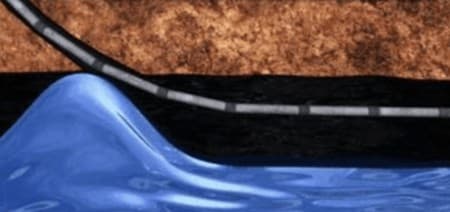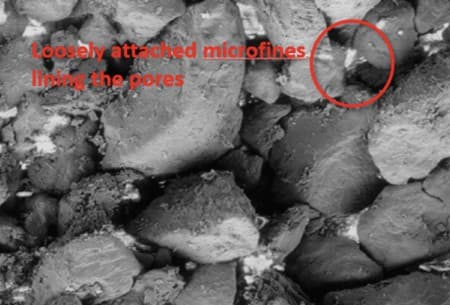It is very common today to read about shutting-in of producing oil and gas wells to reflect the reality there are fewer and fewer places to store oil right now. An old oilfield maxim-the cheapest storage is in the ground. It wasn’t coined to meet the criteria that are extant today as regards surface storage limitations, but rather to reflect costs of production versus sales prices. As we are all learning though, these two scenarios are very much related.
I get a lot of questions from readers of my articles, and students in my Reservoir Drill-In Fluids design classes about what happens with oil and gas wells that are shut-in. As discussed, there is a lot of this going on right now due to the oil glut we are experiencing. That answer is generally, that there are definite problems associated with doing this, but it’s not guaranteed they will occur in every instance. Sometimes you just get lucky. More often than not though, the sub-surface gremlins that reside in oil and gas reservoirs are going to get you. There is a reason that service companies earn billions of dollars annually pumping stuff down wells to fix perceived problems with production. So the question before us now is what are some of the mechanisms that cause problems restoring production to oil and gas wells after they have been shut-in?
One thing that can happen to oil and gas wells when they are shut in after being on production is a change in wettability. We will discuss ‘wettability’ in some detail in this article, but essentially amount to the surface wetting condition of the discrete particles of sand and other constituents that comprise the rock in oil and gas reservoirs. Water coning is one frequent contributor to this problem.
Note- the discussion that follows is not comprised of absolutes. I am in no way saying that the phenomena I'm putting forth here happen automatically, every time. They can and do happen on a large scale, but each individual well is subject to its own unique circumstances. That's why we need engineers!
Early onset of water production
First, water production is the death of oil production. Another oil production maxim is: as permeability to water increases, permeability to oil declines.

Source: Author's files
Here is a fairly common producing scenario. When you have an extended producing interval, not all sectors contribute equally to production. Over time this can lead to "water coning." This can be tolerated for a time, but eventually the shift toward higher water production will make the well uneconomic to produce. In the case of a shut-in scenario the water contact may encroach prematurely into rock that was producing oil. The graphic below illustrates this problem in horizontal wells. There isn't a lot you can do about this once it occurs. Prevention is the cure, and that is the science behind "Production or Reservoir Engineering."
Premium: The Oil Sector That Will Suffer The Most

Source: Author's files
So, let's say in a shut-in scenario in a well with multiple producing intervals, or zones you have water from a higher pressure zone encroaching into a partially depleted, lower pressure zone. This effect will occur in part from the well redistributing total shut-in pressure from the shut-in.
Now let's make the producing scenario even more complicated. Suppose the oil quality varies with in the well? This is pretty common in oil produced from different depths of burial in the reservoir. The oil make up and quality can vary significant leading to the next problem associated with oil production.

Emulsions
With oil production you change the state of fluids-oil, condensate, and connate brines, that have rested in equilibrium with each other for millions of years. They were doing great, and then we oilies come along, and disturb the peace and quiet. This happens in a relative instant on the geologic time-scale. When incompatible substances are mixed, emulsions can be formed. The combination of oil/water/and oil of varying quality can form very thick, nasty emulsions in situ that will definitely restrict further production of oil from the reservoir. The picture below shows the effect of mixing various crudes with oilfield brines.

Source There are a number of reactions that can result in the examples shown above. Among them, pH, viscosity, water-availability, oil-phase, water-phase, salinity, and others.
Fixing oil wells with emulsion or wettability problems is a huge portion of the remedial stimulation industry, which is itself cozily connected to the initial completions industry. Often in my career helping operators bring their wells online, I have found a remedial stimulation proposal to fix problems created by the original completions provider. The ‘left hand’ seldom talks to the ‘right hand’ in the oilfield.
The larger point is not who causes the problems that create emulsion, but rather that they are a routine hurdle to efficiently producing wells. In the well shut-in scenario we are discussing there is potential for emulsions like those shown in the example above to be created in-situ, and they will impede production initially and perhaps as the result of remedial stimulation attempts that go wrong.
One final problem-fines
This one is actually related to the onset of water production. Most oil and gas reservoirs are water-wet. What this means is that the individual grains that makeup the rock oil of an oil reservoir are coated with a film of water. If that changes to where they are coated with oil we say we have changed the "wettability" of the rock. This is bad for oil production.
Premium: 2 Stocks To Consider As Oil Nears $15
You know from school that oil and water don't mix, right? Well the fact that the reservoir is typically water-wet aids in oil production through reduced friction factors. Oil slips more easily through water-wet pores that those that are wetted with oil.

Source: Author's files
Concomitant with water coning is the mobilization of microfines. This can take many forms. From the loosely attached particles in the picture above to the water-swelling clays in the picture below.

Source: author's files Smectite, the clay form shown above can increase twenty-times its relative size with the uptake of water.
Any change in the state of these reservoir components is referred to as "Damage," and will restrict the production of oil and gas. In case of the microfine, it is mobile in its wetting phase and water influx will dislodge it from its current place of repose. It will likely be joined by millions of other microscopic bits of debris as water flows past it, and where do you suppose it will go?
Answer, to the area of highest permeability that probably formerly produced oil. These bits of debris will accumulate in this high perm area, and plug it off.
In the case of the water-swelling clay, its expansion in situ will plug off the horizontal permeability, and restrict oil production.
As I've said previously, there isn't a lot you can do about this once it occurs. You can try, but intervention attempts in this case are problematic in outcome, and expensive to undertake.
Your takeaway
It is pretty common in many articles being published now, to fairly glibly speak of shutting in existing wells. Indeed this is happening and it must happen. The point of this article was to let you know there is a potential dark side to doing this that won't be known until they try and restart the wells.
Some of these wells will never return to their former glory. Others will do just fine. As I said above individual circumstance will prevail in each case. The net effect though will likely be less oil and gas than there was before.
By David Messler for Oilprice.com
More Top Reads From Oilprice.com:
- Could Brent Crude Oil Prices Ever Fall Into Negative Territory?
- Big Oil’s Dilemma: Cut Dividends Or Cut Operations
- Brent Oil Price Could Double By December


















